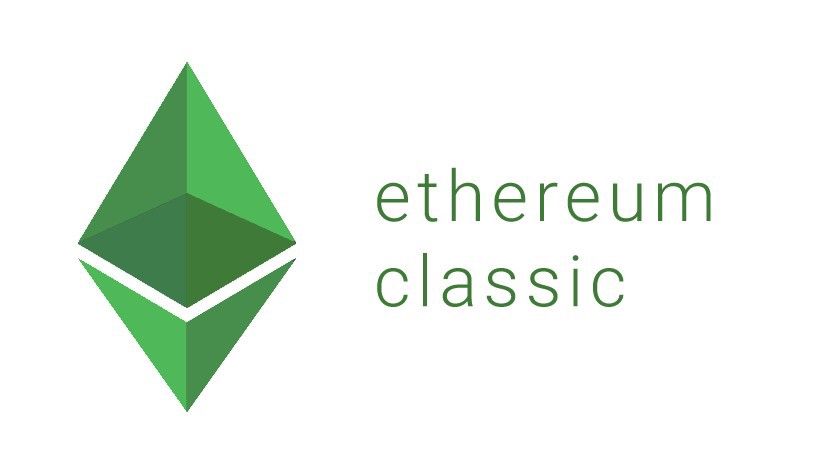Liquid Staking: A Deep Dive into Amazing Lido Tokens In 2025
Liquid staking has emerged as a transformative innovation in the cryptocurrency space, addressing the limitations of traditional staking. Lido, a leading liquid staking protocol, offers a solution that combines liquidity, accessibility, and enhanced capital efficiency. By issuing liquid staking tokens (LSTs) such as stETH, Lido allows users to stake their cryptocurrency while maintaining liquidity for other uses. This article delves into the mechanics of liquid staking via Lido, its benefits, and its impact on the Ethereum ecosystem and beyond.
Key Highlights
- Liquidity Through stETH: Lido enables users to stake ETH and receive stETH, a tokenized representation of their staked assets.
- Addressing Staking Challenges: Liquid staking removes traditional barriers such as asset lock-ups and illiquidity.
- Enhanced Capital Efficiency: stETH can be used in decentralized finance (DeFi) protocols, maximizing the utility of staked assets.
- Decentralized Governance: Lido operates through a decentralized governance framework involving its native LDO token.
What is Liquid Staking?
Liquid staking is a mechanism that allows cryptocurrency holders to stake their assets in a blockchain network while simultaneously retaining liquidity through derivative tokens. Traditional staking, while integral to proof-of-stake (PoS) blockchains like Ethereum, locks up user assets, limiting their usability.
Lido solves this by providing staked ETH (stETH) in return for staked ETH, representing the user’s staked assets along with accrued staking rewards. This derivative token can be freely transferred, traded, or utilized in other DeFi applications.
How Lido Works
- Staking ETH via Lido:
- Users deposit ETH into the Lido protocol.
- The protocol delegates this ETH to a network of professional, vetted validators, ensuring network security and efficiency.
- Issuance of stETH:
- For every ETH staked, users receive an equivalent amount of stETH.
- stETH accrues staking rewards in real-time, reflecting the yield generated by the underlying staked ETH.
- Maintaining Liquidity:
- Unlike traditional staking, users can trade or transfer stETH without waiting for Ethereum’s unbonding period (approximately 27 days as of Ethereum’s Shanghai upgrade).
- Rewards and Risks Management:
- Stakers receive rewards based on Ethereum’s staking yield, minus a small commission retained by Lido.
- Lido employs mechanisms such as slashing insurance to mitigate risks associated with validator penalties.
By seamlessly integrating staking and liquidity, Lido enhances the user experience while contributing to Ethereum’s network security.
Challenges of Traditional Staking
- Liquidity Constraints:
- Staked assets in traditional systems are locked and cannot be used for trading, borrowing, or other purposes.
- Unbonding Periods:
- Withdrawals of staked assets often involve long waiting periods, reducing flexibility for users.
- Capital Inefficiency:
- Locked staked assets do not contribute to the broader DeFi ecosystem, limiting their overall utility.
- Validator Selection:
- Individual stakers must choose reliable validators, adding complexity and risk.
Liquid staking protocols like Lido overcome these limitations, providing stakers with both rewards and liquidity.
Lido and stETH: Providing Liquidity
What is stETH?
stETH is the liquid staking token issued by Lido to represent staked ETH. It is pegged to the value of ETH and accrues staking rewards over time.
Key Features of stETH:
- Real-Time Rewards Accrual:
- Unlike traditional staking rewards that are distributed periodically, stETH increases in value continuously, reflecting staking rewards in real-time.
- Interoperability with DeFi:
- stETH can be used as collateral in lending platforms, traded on decentralized exchanges (DEXs), or used in yield farming strategies.
- This integration maximizes capital efficiency, as users can earn staking rewards while leveraging stETH for other financial activities.
- Liquidity:
- stETH holders can swap their tokens for ETH on secondary markets if they need immediate liquidity.
- Transparency:
- Lido provides transparent reporting of staking metrics, ensuring users can track their staked assets and rewards.
These features make stETH a versatile and highly functional asset within the Ethereum ecosystem.
Decentralized Governance and Security
Lido is governed by holders of the LDO token, who vote on key protocol decisions, including validator selection, fee structures, and protocol upgrades. This decentralized governance model ensures that the protocol remains community-driven and adaptable to evolving needs.
Security Measures:
- Validator Diversity:
- Lido works with a decentralized set of validators, reducing reliance on any single entity.
- Slashing Insurance:
- To protect users, Lido has a slashing insurance fund that covers losses incurred due to validator penalties.
- Audits and Transparency:
- Lido undergoes regular security audits to identify and mitigate potential vulnerabilities.
These measures ensure a robust and secure liquid staking environment for users.
Benefits of Lido’s Liquid Staking
- Accessibility:
- Lido lowers the barriers to staking by allowing users to stake any amount of ETH, making it accessible to retail investors.
- Enhanced Yield Opportunities:
- By providing liquidity through stETH, users can earn staking rewards while participating in DeFi activities, effectively earning dual yields.
- Flexibility:
- Users can exit their staked position by trading stETH, avoiding the constraints of Ethereum’s unbonding period.
- Ecosystem Growth:
- Liquid staking contributes to Ethereum’s decentralization by encouraging broader participation in staking.
- Network Security:
- By pooling staked ETH and delegating it to professional validators, Lido strengthens Ethereum’s proof-of-stake security model.
Challenges and Considerations
- Centralization Concerns:
- As one of the largest liquid staking providers, Lido controls a significant portion of staked ETH, raising concerns about centralization.
- Lido is actively working to decentralize its validator network to mitigate these risks.
- Smart Contract Risks:
- As a smart contract-based protocol, Lido is exposed to potential vulnerabilities, though regular audits reduce these risks.
- Price Volatility of stETH:
- While stETH is designed to track ETH’s value, liquidity constraints or market conditions may lead to temporary deviations.
- Dependency on Validators:
- The performance of validators directly impacts staking rewards and user trust.
Despite these challenges, Lido continues to lead in liquid staking adoption due to its robust features and active community governance.
Lido’s Impact on Ethereum and DeFi
- Boosting Ethereum’s Staking Rate:
- Lido has significantly increased Ethereum’s staking rate by making staking more accessible and attractive.
- Enhancing DeFi Liquidity:
- stETH’s integration with major DeFi platforms has bolstered liquidity and innovation within the ecosystem.
- Reducing Entry Barriers:
- By enabling small-scale staking, Lido democratizes access to Ethereum staking rewards.
- Incentivizing Validator Participation:
- Lido’s model encourages validator participation by providing reliable delegation and rewards.
- Strengthening Ethereum Security:
- Higher staking participation translates into greater network security for Ethereum’s proof-of-stake system.
The Road Ahead for Lido
As Ethereum’s proof-of-stake ecosystem matures, Lido faces several opportunities and challenges:
- Decentralization Efforts:
- Lido is working on decentralizing its validator set further to reduce centralization risks.
- Cross-Chain Expansion:
- Lido is exploring liquid staking solutions for other blockchain networks, broadening its impact.
- DeFi Integration:
- Deeper integration with DeFi protocols will enhance the utility of stETH and drive adoption.
- Regulatory Landscape:
- As staking becomes more regulated globally, Lido must adapt to comply with emerging requirements.
- Innovation and Upgrades:
- Continued innovation in staking mechanics and governance will be critical for maintaining Lido’s leadership in the liquid staking space.
Also, read – Liquid Staking Derivatives: Enabling Yield Without Locking Assets In 2025
Conclusion
Lido’s liquid staking solution exemplifies how DeFi innovation can address traditional staking limitations, providing liquidity, flexibility, and enhanced utility for staked assets. By issuing tokens like stETH, Lido empowers users to earn staking rewards while actively participating in the broader Ethereum ecosystem.
As Lido continues to evolve, its impact on Ethereum’s staking economy and the DeFi landscape is poised to grow, reinforcing its role as a critical infrastructure provider in the blockchain space.
Stay informed with daily updates from Blockchain Magazine on Google News. Click here to follow us and mark as favorite: [Blockchain Magazine on Google News].
Get Blockchain Insights In Inbox
Stay ahead of the curve with expert analysis and market updates.
latest from tech
Disclaimer: Any post shared by a third-party agency are sponsored and Blockchain Magazine has no views on any such posts. The views and opinions expressed in this post are those of the clients and do not necessarily reflect the official policy or position of Blockchain Magazine. The information provided in this post is for informational purposes only and should not be considered as financial, investment, or professional advice. Blockchain Magazine does not endorse or promote any specific products, services, or companies mentioned in this posts. Readers are encouraged to conduct their own research and consult with a qualified professional before making any financial decisions. The featured image used is just a creative depiction of the title and it does not intend to hurt sentiments of any person or institution. If it hurts anyone sentiments, please do not hesitate to reach out to Blockchain Magazine.

 Bitcoin
Bitcoin  Ethereum
Ethereum  XRP
XRP  Tether
Tether  Solana
Solana  USDC
USDC  Dogecoin
Dogecoin  Cardano
Cardano  Lido Staked Ether
Lido Staked Ether  TRON
TRON  Wrapped Bitcoin
Wrapped Bitcoin  Chainlink
Chainlink  Wrapped stETH
Wrapped stETH  Avalanche
Avalanche  Sui
Sui  Stellar
Stellar  Litecoin
Litecoin  Toncoin
Toncoin  Shiba Inu
Shiba Inu  Hedera
Hedera  LEO Token
LEO Token  USDS
USDS  Hyperliquid
Hyperliquid  Polkadot
Polkadot  WETH
WETH  MANTRA
MANTRA  Bitcoin Cash
Bitcoin Cash  Bitget Token
Bitget Token  Ethena USDe
Ethena USDe  Wrapped eETH
Wrapped eETH  Uniswap
Uniswap  Monero
Monero  NEAR Protocol
NEAR Protocol  Pepe
Pepe  WhiteBIT Coin
WhiteBIT Coin  Aave
Aave  Bittensor
Bittensor  Ondo
Ondo  Aptos
Aptos  Internet Computer
Internet Computer  Dai
Dai  Official Trump
Official Trump  Ethereum Classic
Ethereum Classic  Mantle
Mantle  Tokenize Xchange
Tokenize Xchange  OKB
OKB  Gate
Gate  sUSDS
sUSDS  Sonic (prev. FTM)
Sonic (prev. FTM) 




